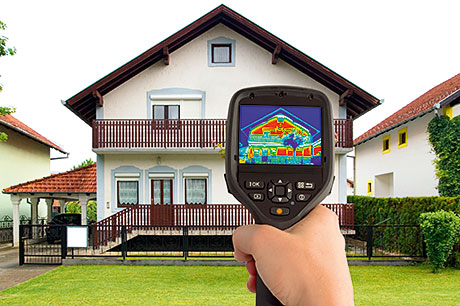
As politicians and journalists line up to hurl rotten tomatoes at the UK government’s Green Deal, widely regarded as a fiasco because of its slow uptake and the administrative bungling that appears to be behind it, Project Scotland decided to find out why it’s all gone so wrong, and to unravel some of the confusion surrounding the topic.
Last month it was widely reported that only 12 homes have so far benefitted from the energy saving measures covered by the Green Deal. But these latest uptake figures – released by the Department of Energy and Climate Change (DECC) in September – are somewhat out of date, according to the Green Deal Finance Company (GDFC), the government-appointed gatekeeper for the loans made available under the scheme. Many more deals are in the system, with around £2.7m worth of loans having gone through or are just about to go through, according to the GDFC, and we can expect a step change in the reported takeup of Green Deal loans when the October figures come out.
Cambuslang-based Home Energy & Lifestyle Management (HELMS) is one of only 16 UK companies to have so far received the full “onboarded” accreditation, which qualifies it to actually write a GD plan (the others are listed at www.thegreendealfinancecompany.com/). According to HELMS director Doug Wilkie there has been no shortage of interest in the scheme. “Since launching in January we have approved more than £2m worth of loans,” he said. “We have already completed more than 120 GD plans and have submitted 500 or 600.”
Participation in the Green Deal requires an initial assessment of a building to determine what work can be done. A household will be charged £150 for this initial phase, a price tag that includes an EPC, Occupancy Assessment and GD Plan. The next step is to find a Green Deal Provider who will arrange finance and then appoint GD-approved installers to complete the work.
Many companies are accredited to perform the initial assessment (EPC and Occupancy Assessment) but are unable to also produce the “Green Deal Plan” or to secure the finance and carry out the required installation work.
Getting onboard as a supplier
“GD provider status is not the finishing line,” says Wilkie of HELMS. “The finishing line is going through the legal process of becoming ‘onboarded’.” The fact that one year on, only 16 organisations have managed to acquire this magical onboarded status – making it impossible to even approach fulfilling the kind of demand the government hoped to generate for the scheme – is widely seen as good reason to criticise the way the package has been rolled out. Reports abound of consumers getting past the first stage then throwing their arms in the air and giving up, such is the difficulty of finding suppliers who can approve the finance or do the installation work.
A degree of rigour in the accreditation process could be seen as a way to ensure the money is spent wisely, suggests Wilkie, but the process to date seems to have left many would-be suppliers with a sour taste.
“Consumers were led to believe they could get a GD assessment, then get on with the second part,” says Warren Mark of Green Deal Savings, one of the GDPs still awaiting onboarded accreditation. “But most have found that the majority of accredited providers aren’t actually signed off with a GD bank.” The experience of his own company was of being awarded accreditation then informed “now you’ll need to spend another 6 months doing X, Y and Z”. He adds: “Had all the information been given to us at the outset it would have speeded up our process of accreditation by 100% – in other words, 6 months rather than about a year.”
One reported bottleneck is with the arrangements surrounding the secure internet gateway that must be set up between a provider and the Green Deal Finance Company, to allow them to issue GD loan funding. Bernard Hughes of the Green Deal Finance Company told Project Scotland: “We have had some feedback on our gateway (the ‘portal’) and we have made two rounds of improvements to date, based in part on HELMS’ experience – and that of others. More improvements are planned over the coming 3-4 months as part of an on-going programme to deliver a better experience for our customers, the GDPs, and the end consumers.”
Another source of reported hold-ups has been with securing the necessary insurance arrangements. Hughes says: “There is now no insurance issue other than an initial slow development of the Insurance Backed Guarantee market to support the Green Deal Guarantee. We are pleased to say there are now several suppliers in the market.”
Widely derided as an administrative fiasco, the Green Deal nonetheless appears to many to be a good idea on paper, or one of the best options available. As Wilkie says: “It doesn’t cost the occupier more than they’re currently paying, it reduces the carbon footprint, and it puts people to work – what’s not to like?” What remains to be seen is whether or not it can be given the “shot in the arm” recommended by the Green Building Council, for one. Labour intends to scrap it if elected while the SNP has made little mention of the scheme, or others that might achieve similar aims.
But it’s not the only option available for homeowners. Wilkie’s company supports the Green Deal as one of four principal finance options for those looking to make energy efficiency improvements to the home, the other three being the energy company obligation (ECO), a parallel government scheme which requires energy companies to fund improvements for lower income households; Cashback from the Energy Systems Trust; and, the final option, the customer paying for or contributing to the cost of the work themselves.











